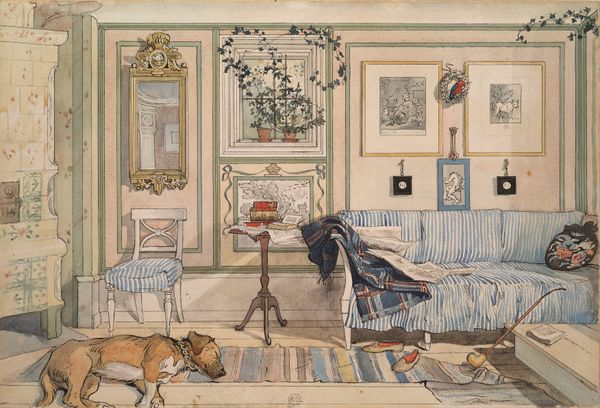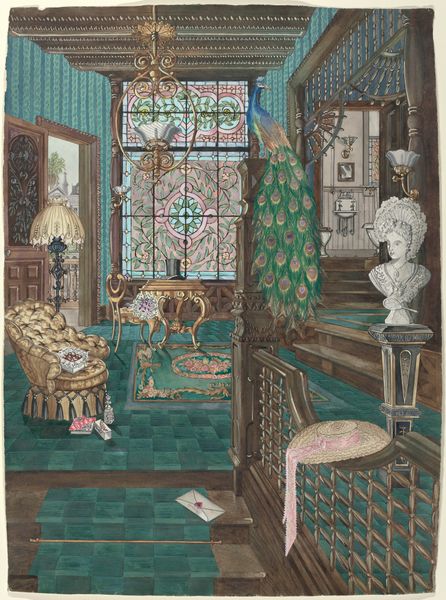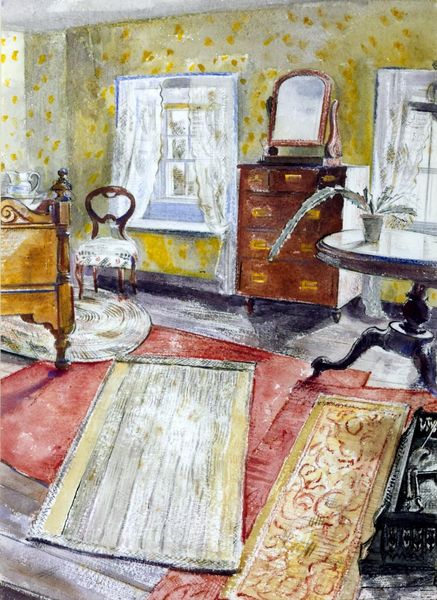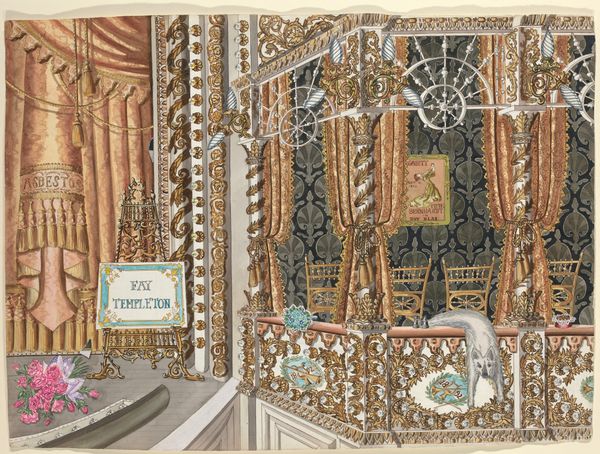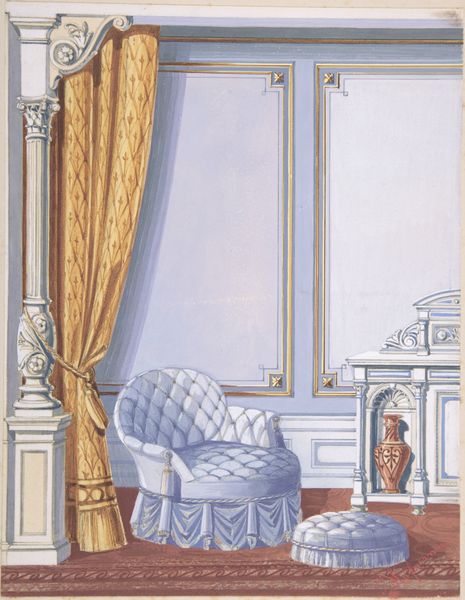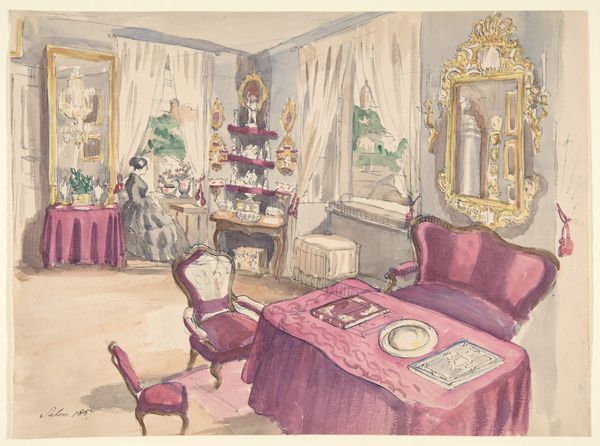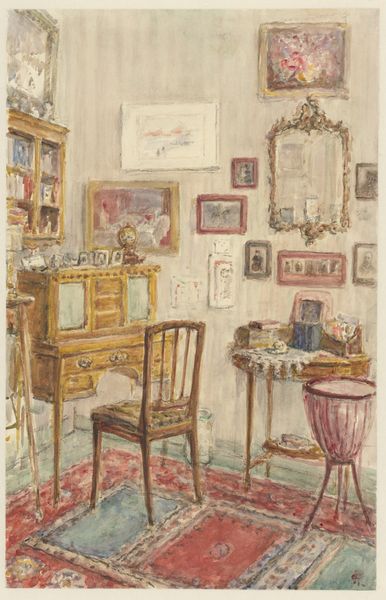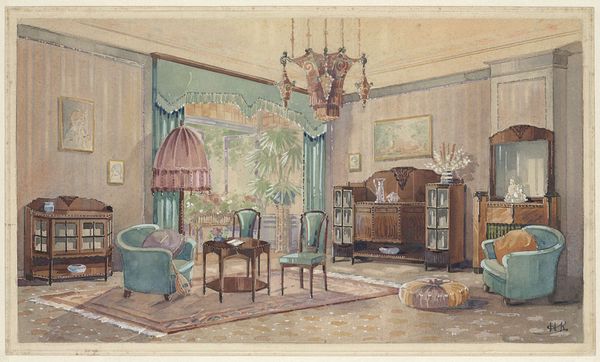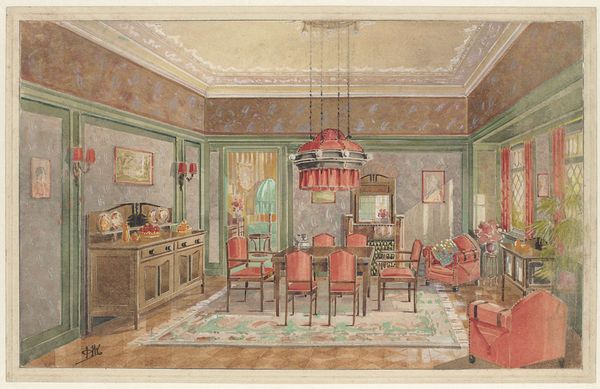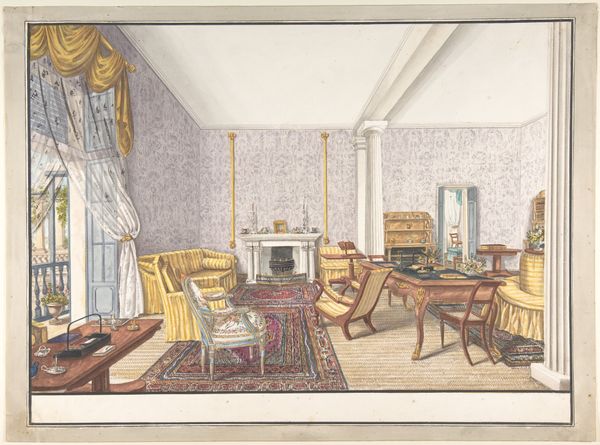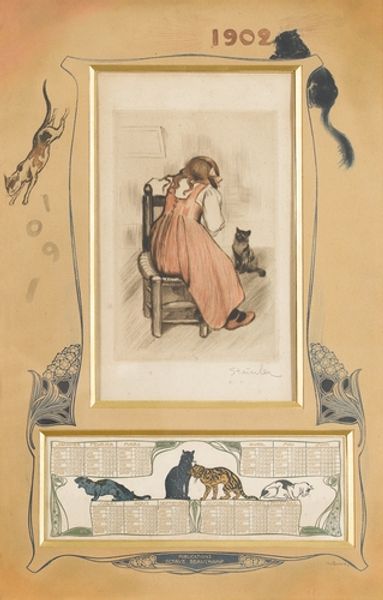
Copyright: Public domain
Editor: Here we have Carl Larsson's "Lazy Nook," painted in 1897. It looks like a cozy domestic interior rendered in watercolor. It makes me think of a carefully staged, yet lived-in space. What draws your eye to this piece? Curator: It's the depiction of the *stuff* of daily life that I find compelling. Look closely at the textures – the woven rug, the striped fabric of the furniture, the glazed ceramic stove. How do these material choices speak to the artist's social standing and domestic routines? Editor: So you’re suggesting we think about this more as a record of a particular lifestyle than just an aesthetic composition? Curator: Precisely! Consider the means of production of these goods, where the materials originate, the labor involved in creating them. Are they mass produced or handmade? Also, how are those artworks displayed above the couch produced? Understanding these factors gives insight into the social and economic context of Larsson’s time. Editor: I never considered analyzing an interior scene in that way. It seems much more about surface than social factors initially. Curator: But surface is deceptive! Think about the consumption inherent in a scene like this – the acquisition of furniture, decorative objects, even the dog. What statement does this consumption make? And how accessible was this lifestyle to the broader population? Editor: So by examining the materials and the making of the objects within the painting, we are actually uncovering deeper truths about labor and society at that moment. I will never look at domestic scenes the same. Curator: Exactly. It transforms a seemingly innocent watercolor into a complex commentary on the material world and its implications.
Comments
No comments
Be the first to comment and join the conversation on the ultimate creative platform.
